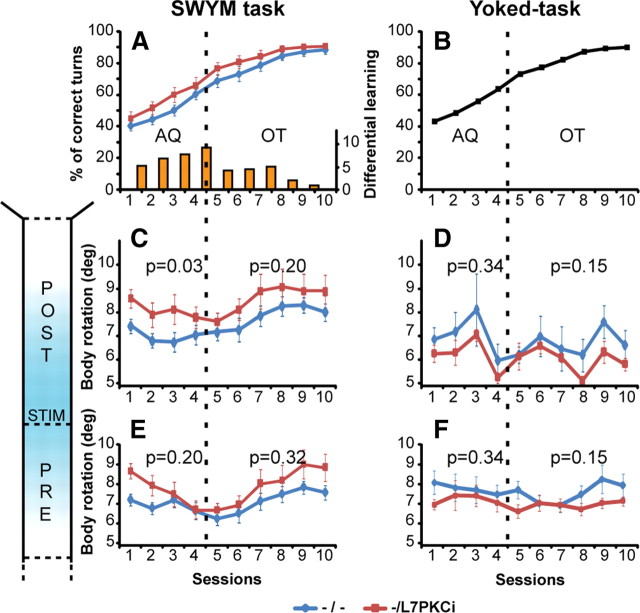Figure 2.
L7-PKCi mice were not impaired in the stimulus–response association. A, SWYM conditioning task resulted in quick learning for both groups (ANOVA, F ( 9,252 ) = 87.68, p < 0.001). An acquisition phase (AQ, from sessions 1–4) with a percentage of correct turns <72.5% and an overtraining phase (OT, from sessions 5–10) were distinguished (separated by a vertical dotted line). The mean percentage of correct turns in control (n = 9) and mutant (n = 12) mice were similar during both the acquisition (F ( 1,28 ) = 2.64, p = 0.12) and the overtraining (F ( 1,28 ) = 1.61, p = 0.22) phases. A distinction between the acquisition and overtraining phases was also shown here by calculating the difference in the percentage of correct turns across the sessions (right, orange histogram). Improvement from session to session was higher during the first four sessions (acquisition) than the last sessions (overtraining). B, Mean value of correct turns of the whole population (n = 21) used in the pseudo-yoked task. C–F, Mean body rotations observed over the 10 sessions of training for the prestimulus and poststimulus zones in the SWYM and yoked tasks. The mutant mice presented a body rotation significantly higher than control mice during the acquisition phase in the poststimulus zone (F ( 1,28 ) = 5.56, p = 0.026, C). We did not observe a significant difference between mutants and controls in the prestimulus zone and in the yoked task (D–F). Error bars indicate SEM. STIM, Stimulus.

